When it comes to immersing yourself in the beauty of nature and indulging in the treasures it provides, the state of Kansas offers a surprising array of wild berries and edible wild plants throughout the year. From early spring to late fall, Kansas’ rich landscapes and diverse ecosystems present a delightful opportunity for hiking and foraging enthusiasts to discover a plethora of delicious and nutritious wild edibles.
Beyond wild berries, the state of Kansas offers plentiful other wild foods. From tangy greens to delectable fruits and prized mushrooms, the state offers a wide range of wild edibles waiting to be discovered. There are the delights of curly dock, sheep sorrel, black walnuts, prickly pear cactus, wild asparagus, Sandhill plums, morel mushrooms, and yucca—nature’s gifts that can be found throughout the beautiful landscapes of Kansas.
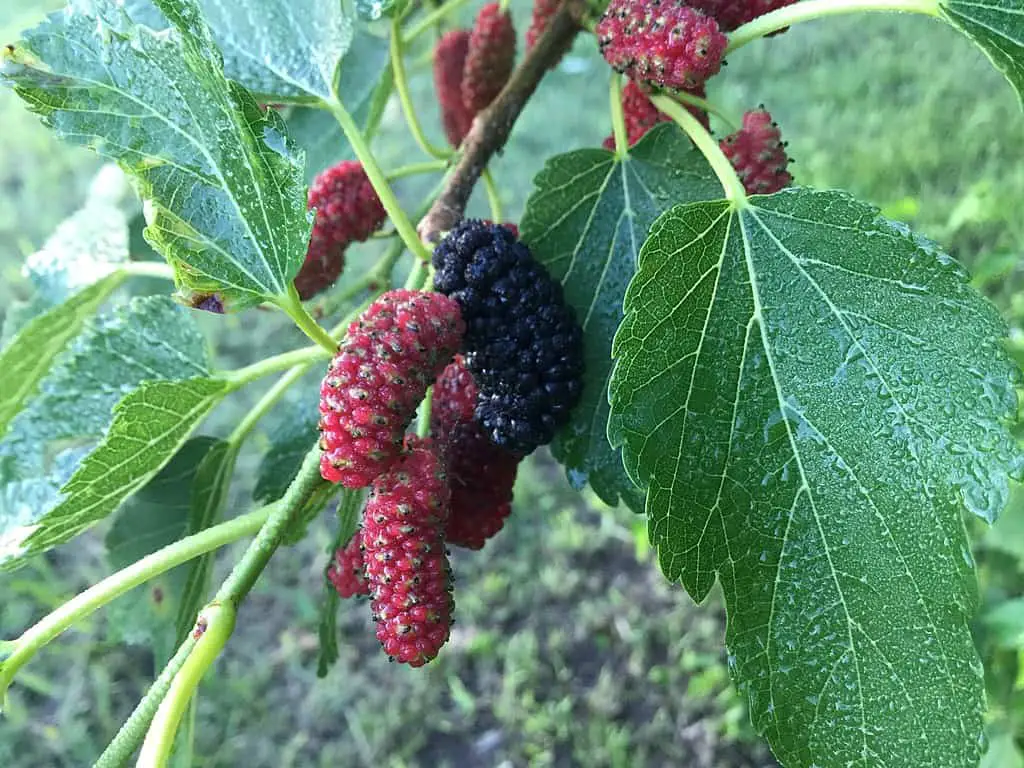
Red Mulberries
Red Mulberries (Morus rubra.) are a beloved wild fruit found in much of North America, including Kansas. We call them berries, but that’s a little misleading. They’re actually drupes, like cherries, plums, peaches, and apricots. This is a technicality, of course. The really important part is that drupes are edible and delicious, and better yet, red mulberry is plentiful in the Wichita area. These berries resemble elongated blackberries or raspberries and can range in color from red to deep purple to almost black when ripe. Mulberry trees are typically found in parks, along riverbanks, and in residential areas. Look for clusters of ripe mulberries hanging from the branches, and be prepared for your fingers to be stained with their sweet, juicy goodness. The best time to harvest mulberries is during late spring to early summer, usually around May and June in Kansas.
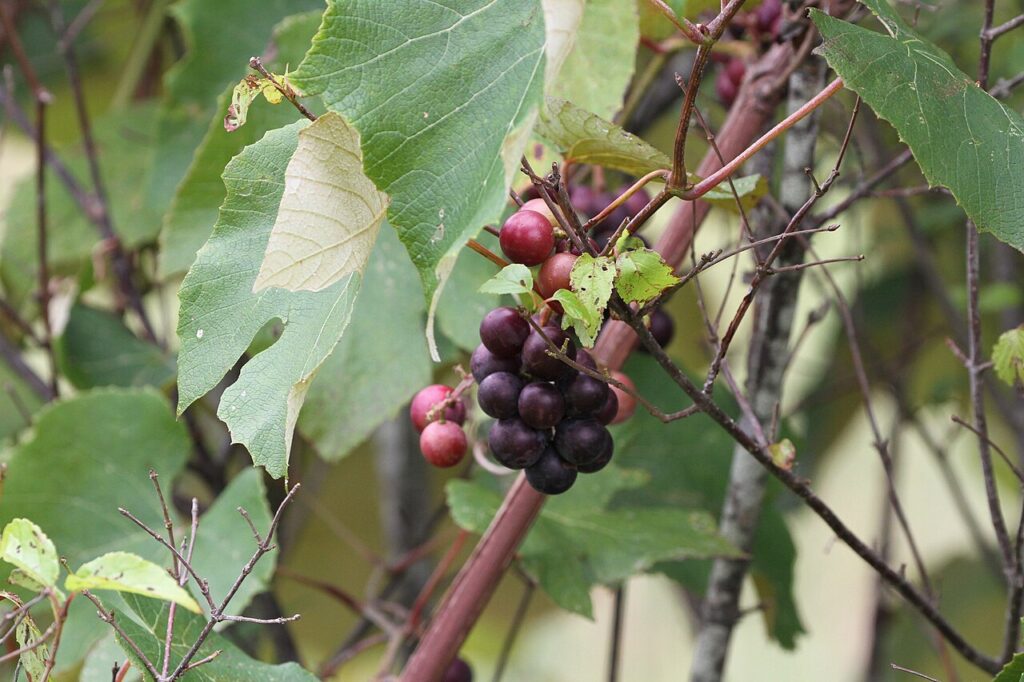
Wild Grapes
Wild grapes (Vitis labrusca) thrive in the woodlands, along forest edges, and near water sources in Kansas. These small, round berries grow in clusters and can be green, purple, or dark blue when fully ripe. The best time to harvest wild grapes is in late summer to early fall, usually around August to September. As you explore the natural landscapes, keep an eye out for these wild treasures dangling from vines. Their sweet and tart flavor makes them perfect for enjoying fresh or transforming into jams and jellies.
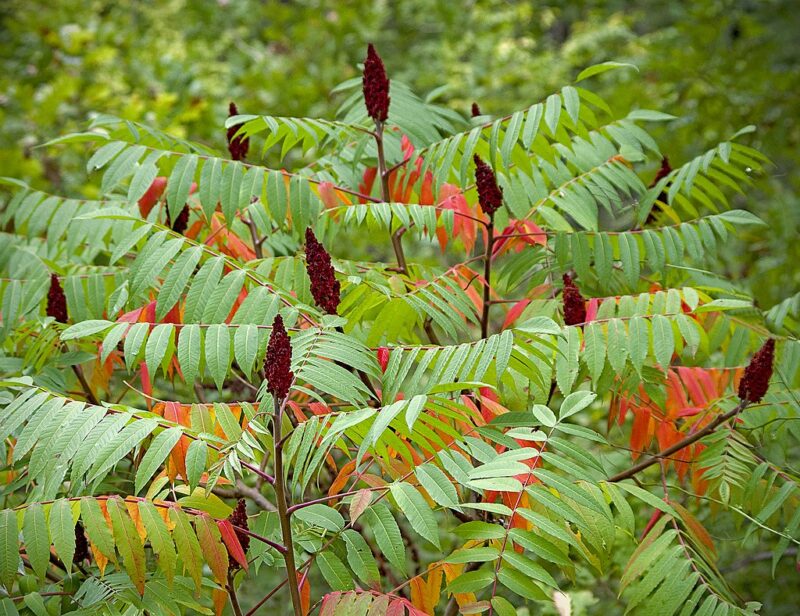
Staghorn Sumac
Staghorn sumac (Rhus typhina) is a shrub that produces clusters of vibrant red fruit called drupes. These fuzzy, cone-shaped clusters resemble velvety spikes, giving the plant its distinctive name. Staghorn sumac thrives in fields, open woodlands, and along roadsides in Kansas. In the spring, this plant will have light green or yellow flowers. The best time to harvest the fruit is in late summer to early fall, typically from August to September. Carefully pluck the drupes from the plant, avoiding contact with the plant’s hairy stems, and enjoy their tangy flavor. You can also use them to make a refreshing sumacade packed with vitamin C.
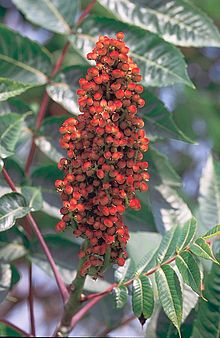
Smooth Sumac
Similar to staghorn sumac, smooth sumac (Rhus glabra) is another wild berry plant found in Kansas. Its fruit clusters are more compact and lack the velvety spikes of its staghorn relative. The berries are also red and provide a tart flavor. Smooth sumac can be found in prairies, open fields, and along roadsides. Harvest the berries during late summer to early fall, usually from August to September. They can be used in a variety of culinary creations, including teas, jellies, and spice blends.
Smooth Sumac is a great example of a plant that you need to be really careful with. Yes, the berries on the smooth sumac are edible. However, other parts of the plant are actually poisonous. You should never eat smooth sumac leaves, and it may be best to wear gloves while picking the smooth sumac berries. Interestingly, while we know that the leaves are poisonous when properly used, they actually have medicinal uses. There were quite a few ways that Native American tribes in the area found the leaves useful. One was by smoking the leaves to help with asthma. Today, it’s best to leave the poisonous leaves.
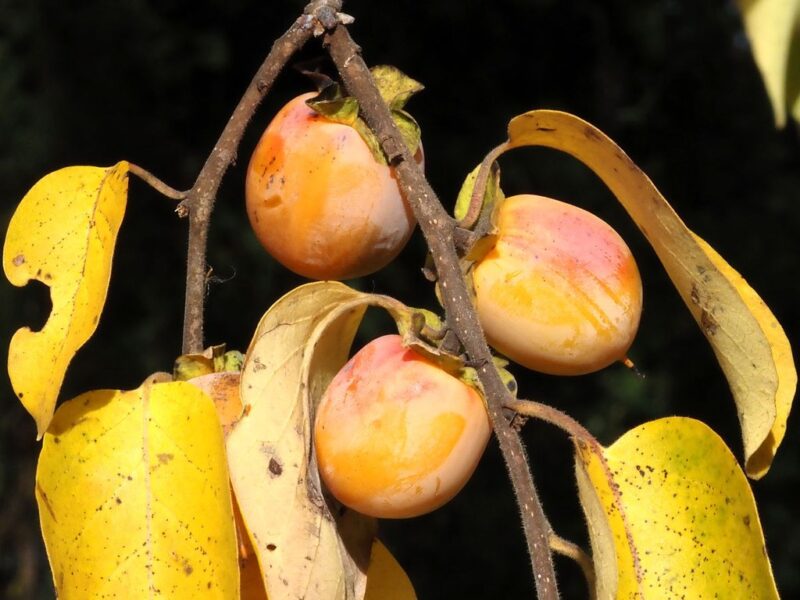
American Persimmon
The American persimmon (Diospyros virginiana) is a small orange fruit that resembles a tomato. These delicious fruits can be found on deciduous trees in Kansas, particularly in wooded areas and along riverbanks. The best time to harvest persimmons is in late fall, around October and November. Ensure that the fruit is fully ripe before consuming, as unripe persimmons have a strong, astringent taste. When fully ripe, they offer a sweet and rich flavor, making them perfect for desserts, jams, or simply enjoying them as a wholesome snack.
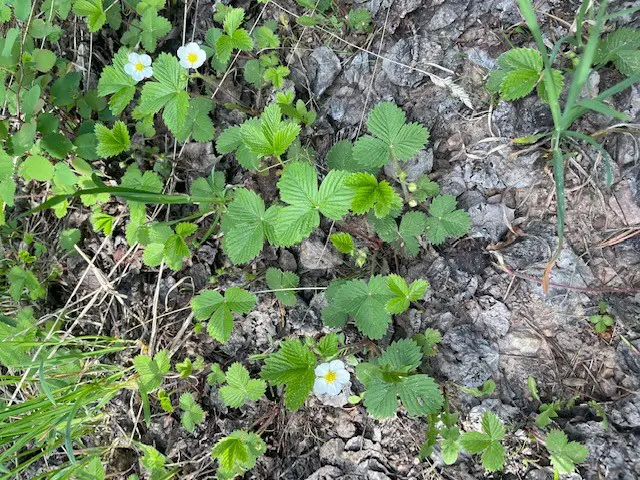
Wild Strawberries
Strawberries are a fruit that many of us associate with grocery stores. At the store, you’ll see fairly huge berries. Don’t expect that from the wild variety. Do expect a particularly sweet and delicious flavor.
Eastern Kansas is home to the elusive and delightful wild strawberry (Fragaria virginiana). These bright red berries are small, about the size of a thumbnail, and are packed with intense flavor. Wild strawberries can be found in open woodlands, prairies, and along forest edges. The best time to harvest these tiny treasures is in early summer, typically in June. Keep your eyes low to the ground and carefully pluck the wild strawberries.

Wild Rose
Wild roses (Rosa spp.) grace the landscapes of Kansas with their beauty and provide a bonus of edible rose hips. These round, reddish-orange fruits can be found on small trees and shrubs.
When we think of roses, we traditionally think of red flowers. You will sometimes find the flowers as red flowers, but there are also purple flowers on the wild rose in Kansas. The flowers can be used in teas. If you pick the flowers, you won’t get berries. The flowers can be harvested in the late summer. The red berries appear in the fall through the winter.
Look for wild roses along forest edges, old fields, in open meadows, and even in residential areas. Rose hips are rich in vitamin C and can be used in teas, jams, jellies, or dried for future use. Keep in mind that not all rose hips are palatable, so make sure to positively identify the wild rose before harvesting.
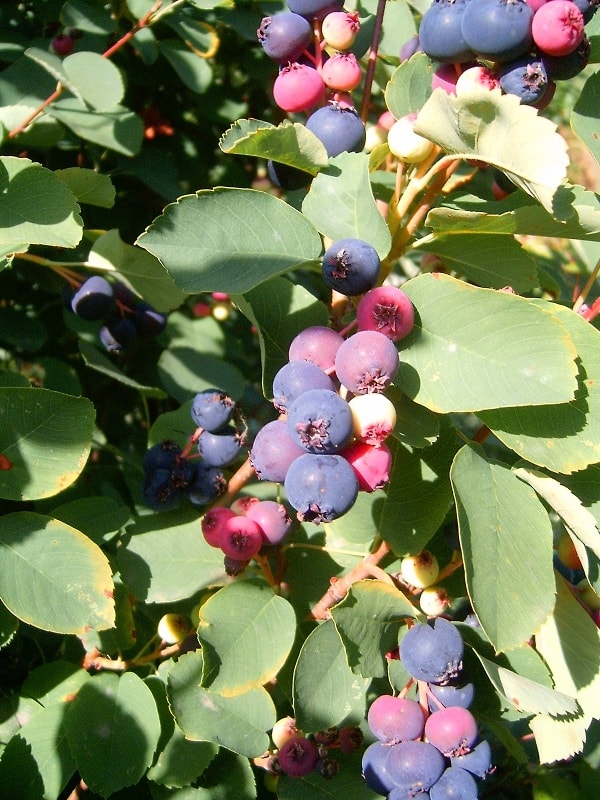
Juneberries
The Juneberry, also known as Saskatoon serviceberry, is another member of the rose family growing wild in Kansas. The berries are sweet, packed with antioxidants and vitamin C, and make a great treat right off the bush or cooked into pies or jams.
While these berries start off pink, they’re not ripe until they’re a dark blue or purple color. The stems are a deep brown that sometimes looks red. The simple green leaves grow on a large shrub.
Foragers looking for Saskatoon berries in Kansas will want to try their luck in July, though you may be able to find them as early as June or sticking around into August. If you find them in June, make sure they’ve ripened to their darker color.
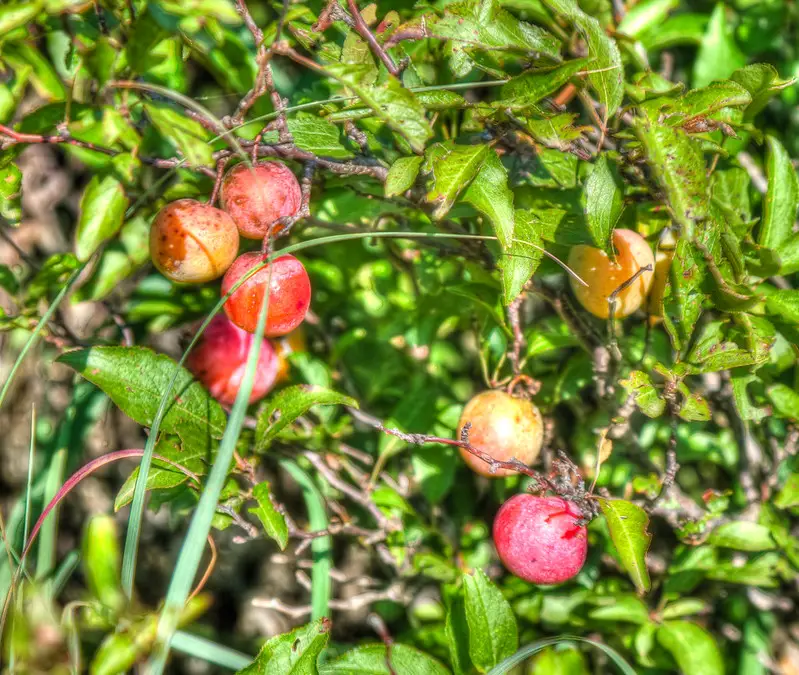
Sandhill Plums
Sandhill plums (Prunus angustifolia) are small, round fruits that grow on shrubs and trees in sandy areas, prairies, and open woodlands of Kansas. These wild plums have a tart and slightly sweet flavor, making them perfect for jams, jellies, or pies. In the spring, typically in April in Kansas, you’ll see small white flowers growing on the plant. The best time to harvest sandhill plums is in late summer, typically from July to August. Look for the ripe, reddish-purple plums hanging from the branches, and savor their vibrant taste.

Wild Red Raspberry
Wild Red Raspberries (rubus idaeus) thrive in acidic soils and are prized for their flavor. Their delicate, jewel-like fruits make for a delightful treat while hiking through the wilderness. They look very similar to the red raspberries you’re familiar with in grocery stores, though they may be slightly smaller and they are often sweeter. Lots of locals love to pick wild raspberries, freeze them, and add them as the main flavor for homemade ice cream.
When you’re looking for wild raspberry bushes, be aware that they grow close to the ground. Also note that occasionally, when there was a harsh winter, the raspberries ripen up to a full month later than normal. There have been years where wild raspberries ripened in September.
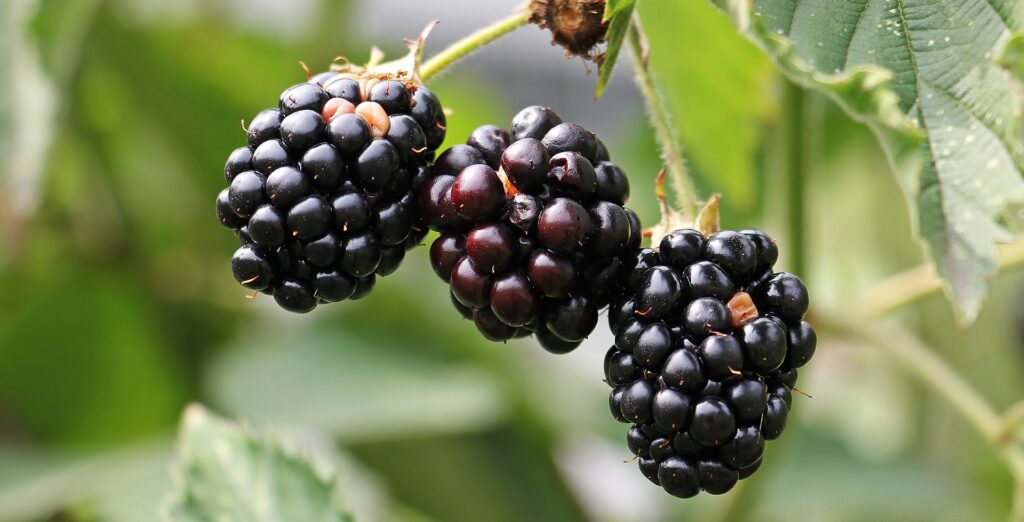
Wild Blackberries
If you are out hiking in the eastern half of Kansas, look for blackberry bushes along the edges of meadows, near streams, or in shady areas. These regions provide the optimal conditions for blackberries to grow.
Wild blackberries typically have clusters of small, round berries that are dark purple to black when fully ripe. The berries are glossy and have a slightly tart yet sweet flavor. Observe the leaves of the blackberry plant, which are typically composed of three to five oval-shaped leaflets. These jagged-edged leaflets have a vibrant green color and are covered in fine hairs. Familiarize yourself with the distinct leaf structure to differentiate wild blackberry plants from other species.
Keep in mind that wild blackberries grow on thorn-covered vines. There may also be poison oak in the area. Make sure that you are wearing jeans that cover your entire leg. It’s also a good idea to wear long sleeves and thick gloves. Be aware of what your skin is touching so you don’t get cut or get a rash from the poison oak. If you have pets or children with you, you will need to watch them carefully.
In a typical year, you can harvest blackberries from late July through August. You may find some still around well into September.
Once you’ve successfully located a patch of wild blackberries and identified them correctly, it’s time to savor the delicious fruits of your labor. You can happily indulge in the simple pleasure of eating ripe blackberries straight from the bush. Their natural sweetness and juiciness are unparalleled, offering an explosion of flavor with every bite. Rinse the berries gently before enjoying them to remove any dirt or debris.
Wild blackberries can enhance a variety of culinary creations. Use them in pies, cobblers, jams, or preserves to capture their essence and preserve their flavor for future enjoyment. Add them to smoothies, yogurt, or salads for a burst of sweetness and a vibrant touch to your meals.
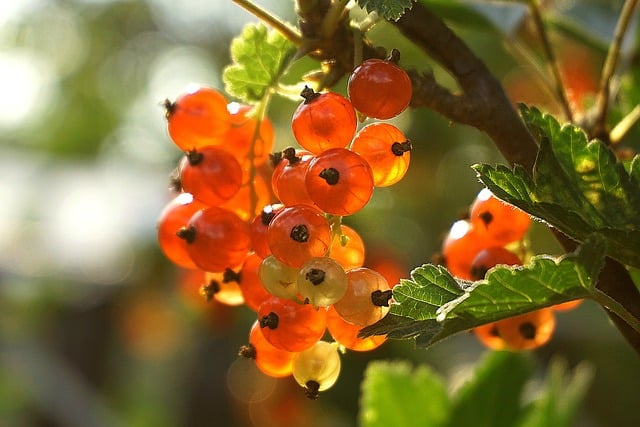
Golden Currant
One of the most popular currants in Kansas that tastes great is golden currants. In the spring, these currants have yellow trumpet-shaped flowers blooming along the trail sides or out in open sunny areas. They have a distinct and lovely smell that draws the attention of hikers. The nectar is so sweet that some people eat the golden flowers themselves. When they become edible fruits, the currants can be yellow, orange, purple, or red. They are shaped like globes and grow in clusters of ten.

Elderberries
Of the several subspecies known to be found in the United States, only one Sumbucus canadensis is known to exist in Kansas. These elderberries exist in the eastern 3/4 of the state.
Elderberries need to be consumed with a fair amount of caution. Never, ever eat raw elderberries of any kind. The fresh berries, the leaves, and the stems are toxic to humans. You won’t see fresh elderberries being sold at a farmer’s market. Instead, you’ll see elderberry syrups, pies, and other forms that have seen the berries properly cooked before eating. You’ll need to strain the seeds during the cooking process.
Red elderberries grow on a bush approximately five feet tall. They grow in the mountains and often along waterfronts since they like moist soil. In the spring, the shrubs have white flowers. Many people eat elderflowers, though they are careful to remove the flowers from the stems, which are toxic.
Elderberries ripen in the late summer, in mid-August through mid-September.
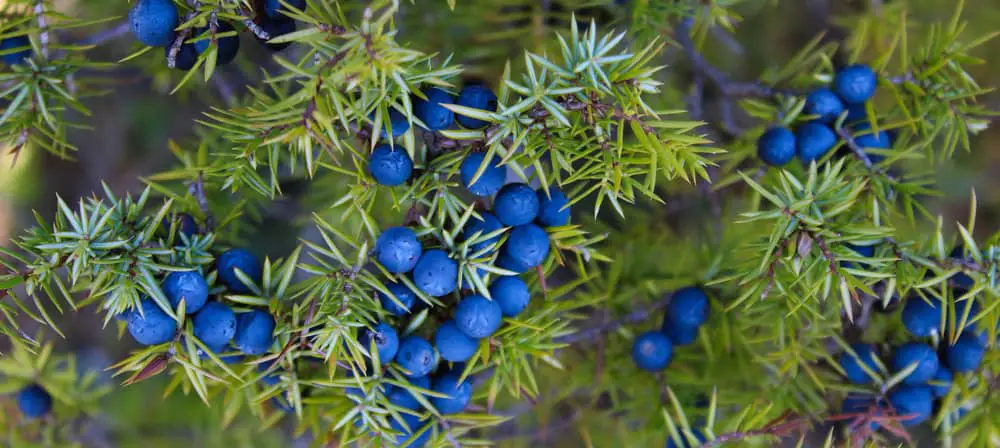
Juniper Berries
The berries from juniper trees (Juniperus communis and several other species) are edible and have been used for food, medicine, and flavoring since ancient times. There are some important things to keep in mind about consuming these berries, however, and anyone considering ingesting them should make sure they know what they’re doing. If not properly identified, some types of juniper can be toxic to humans.
Juniper berries are the fruit of seed cones on junipers, which are evergreen shrubs that grow worldwide. They are a deep blue color with a resinous and woody scent that can be sharp or floral, depending on the species of juniper. They are the seeds of a coniferous tree, and their unique flavor comes from terpenes, compounds that give plants their fragrance and flavor.
A sprinkling of juniper berries can add a fresh, piney flavor to meat dishes and marinades. They are commonly used in northern European and Scandinavian cuisine to season wild game meats like pheasant, other wild birds, venison, and boar. They can also be added to a variety of soups, stews, and chilis for a rustic touch.
The juniper berry is high in powerful antioxidants, which help reduce inflammation and cell damage. The essential oil from juniper berries contains many powerful compounds, including alpha-pinene, beta-pinene, limonene, and myrcene. These natural plant oils have been shown to increase the activity of enzymes like catalase, glutathione peroxidase, and superoxide dismutase, which help protect cells from free radical damage.
Other Edible Plants Found In Kansas
The above are some of the great wild berries you can find in Kansas, but there are plenty of other wild edibles to forage for in this great state. Foraging enthusiasts will want to take a closer look at some other food source options found in the woods in this frequently overlooked state.
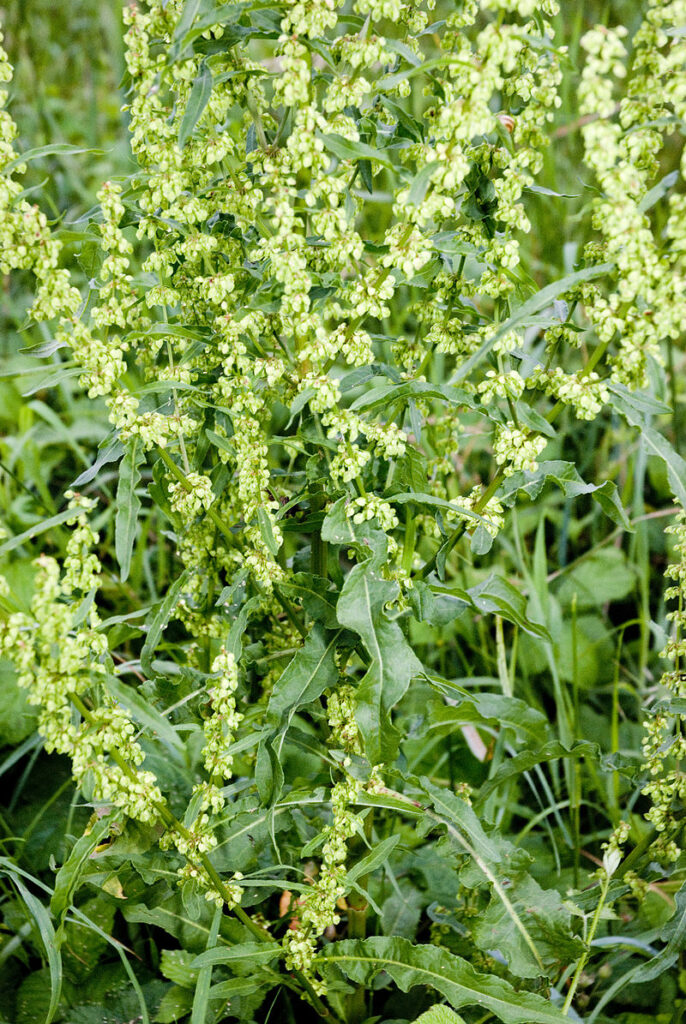
Curly Dock
Curly dock (Rumex crispus) is a wild edible plant known for its large, lance-shaped leaves with wavy edges. It can be found in fields, waste areas, and along roadsides in Kansas. The best time to harvest curly dock is in spring and early summer before it goes to seed. Look for the young leaves, which are tender and flavorful. They can be used in salads, sautés, or cooked as a nutrient-rich green.
It’s especially important to be careful where you pick curly dock. As mentioned above, it’s common in waste areas. You’ll find it growing along sidewalks and roadsides. Leafy greens are especially susceptible to picking up car exhaust. They may also be considered a weed and sprayed with herbicides. These are not things you want to eat. If you’re foraging for curly dock, make sure you do so somewhere you are confident that the plant isn’t full of pollutants that can be harmful to ingest.
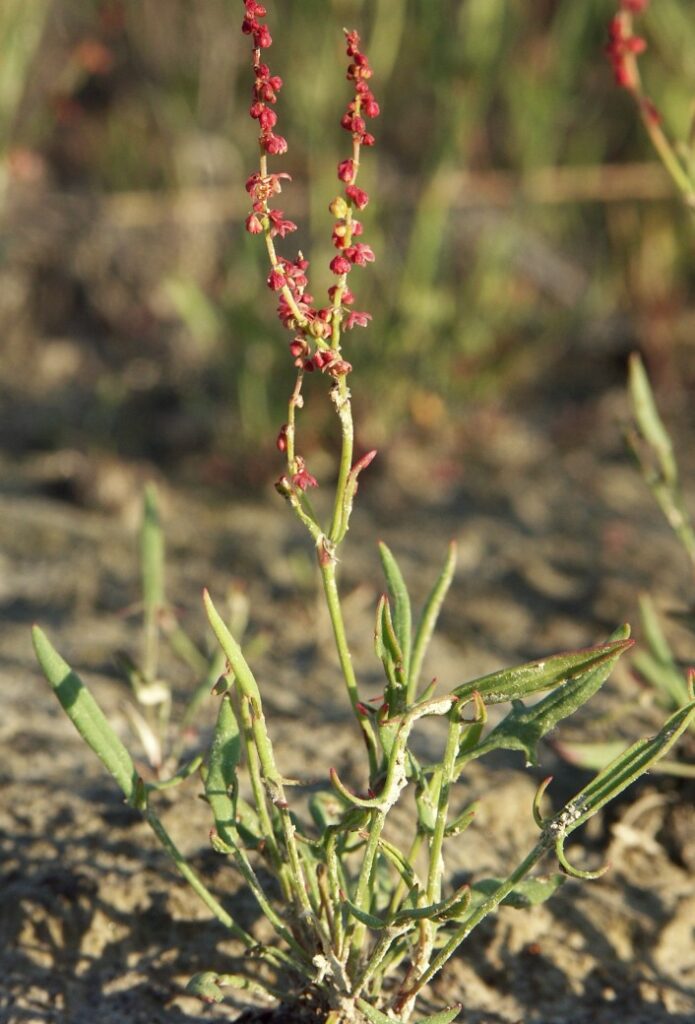
Sheep Sorrel
Sheep sorrel (Rumex acetosella) is a small, perennial herb with arrow-shaped leaves that resemble those of clover. This wild edible plant can be found in open fields, meadows, and prairies throughout Kansas. The best time to harvest sheep sorrel is in late spring and early summer when the leaves are tender and vibrant. Its lemony flavor adds a tangy twist to salads, soups, or even as garnish.
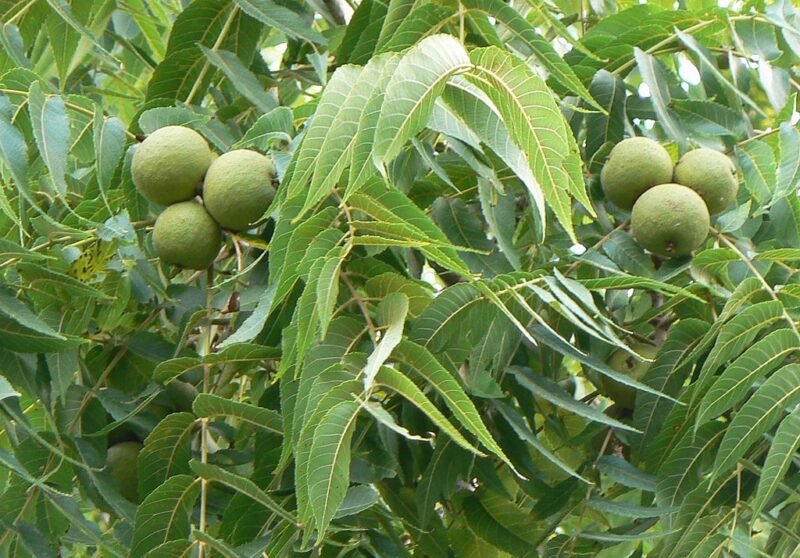
Black Walnuts
Black walnuts (Juglans nigra) are prized for their rich flavor and are abundant in wooded areas and along streams in Kansas. These wild nuts have a hard, thick shell that encases the meaty kernel within. The best time to harvest black walnuts is in the late summer to early fall, usually from September to October. Gather fallen nuts and remove the husks to reveal the deeply flavorful and aromatic nutmeats.

Prickly Pear Cactus
The prickly pear cactus (Opuntia spp.) thrives in the warm and arid regions of Kansas, particularly on the west side of the state. Its flat, paddle-shaped segments are covered in spines and small glochids, which require caution when handling. The fruit, known as prickly pears, grows on the cactus and are usually bright red or yellow when ripe. The best time to harvest prickly pears is in late summer and early fall. Carefully pluck the fruit using tongs or gloves, remove the spines, and enjoy their juicy and sweet flavor. Prickly pears can be eaten raw, used in jams, or transformed into refreshing beverages.
Prickly Pear actually has an interesting history in Kansas. People were paid during the 1930s to try and rid the landscape of the prickly pear during the drought. This plant is very drought resistant, so, during the 1930s, it was taking over the grasslands, making it even harder to grow other plants.
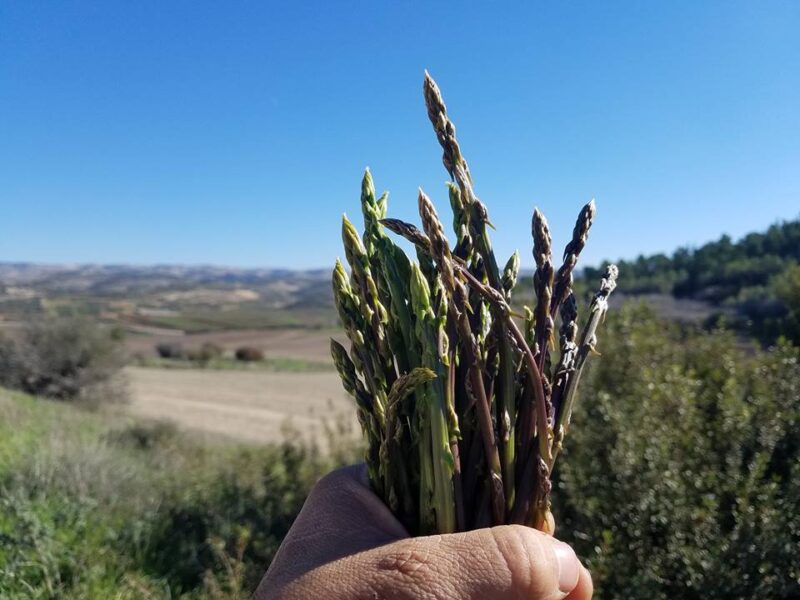
Wild Asparagus
Wild asparagus (Asparagus officinalis) can be found in open fields, meadows, and along forest edges in Kansas. This wild edible plant resembles its cultivated counterpart, so you can expect it to look very similar to what you would find at the grocery. It has slender green shoots and feathery foliage. The best time to harvest wild asparagus is in early spring, usually from April to May. Look for the tender young shoots emerging from the ground. Cut or snap them at the base.
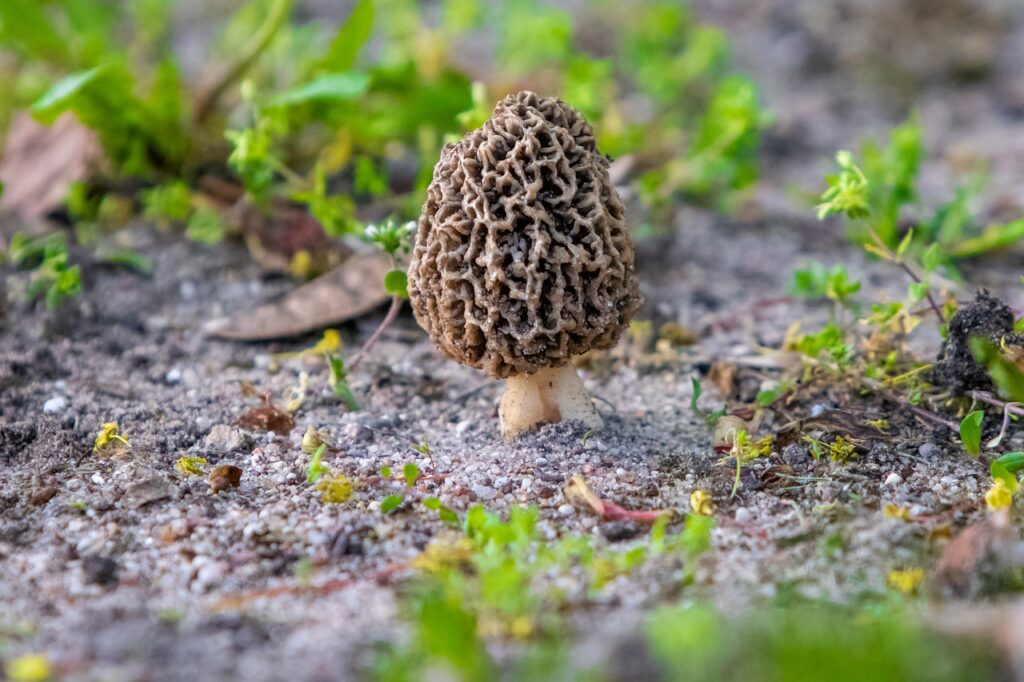
Morel Mushrooms
Morel mushrooms (Morchella spp.) are highly sought-after delicacies among mushroom enthusiasts. These wild mushrooms have a distinctive honeycomb-like cap and hollow stem. Morels can be found in wooded areas, particularly near trees such as oak and elm, throughout Kansas. The best time to harvest morel mushrooms is in the spring, usually from March to May, after the soil has warmed up. Keep a keen eye on the forest floor, and when you spot these prized fungi, carefully cut or twist them at the base. Savor their unique earthy and nutty flavor in a variety of culinary creations.
While morel mushrooms have a particularly distinct look, always be extra careful when foraging for wild mushrooms or berries. There are so many poisonous varieties of these two types of wild edibles in particular. Use multiple sources and take necessary precautions to stay safe.

Yucca
Yucca plants (Yucca spp.) are rugged, desert-adapted plants with long, sword-like leaves and tall flower stalks. The young shoots and flower buds of yucca are edible and can be found in dry, sandy areas, prairies, and open woodlands across Kansas. The best time to harvest yucca shoots is in early spring when they are still tender and before they become fibrous. Cut the shoots close to the base of the plant and peel away the tough outer layers. The shoots can be eaten raw, sautéed, or used in stir-fries.

Broadleaf Cattail
Broadleaf Cattail (Typha latifolia) is a perennial wetland plant native to Kansas and widely distributed across North America. It features tall, slender stalks that can reach impressive heights, with distinctive cigar-shaped flower spikes at their tops. The plant’s leaves are long, strap-like and typically grow in dense clumps. Each component of Typha latifolia presents its own set of uses, making it a valuable resource for creative foragers.
The best time to forage Broadleaf Cattail is during the plant’s growing season, which typically spans from late spring to early fall. Early summer is an especially opportune time when the flower spikes are in their prime.
People forage for Broadleaf Cattail at different times of the year depending on what it is they want to harvest. You can eat many different parts of this plant. The roots are great for harvesting in the fall and winter when most other plants aren’t worth harvesting. Many people harvest the young shoots in the spring. People love to collect pollen and seeds in the summer.
Foraging Wild Edibles in Kansas
Kansas, often overlooked as a foraging destination, surprises us with its abundance of wild berries and edible plants. From the early spring bloom of wild roses to the late fall harvest of wild asparagus, the state’s diverse ecosystems offer a delightful array of flavors and nutrition.
On a final note, always be cautious while foraging. Use multiple sources to identify any edible plants, and be careful not to eat wild edibles you find growing along roadsides, where the plant is likely to have absorbed car exhaust or people may have sprayed the plant with herbicides.
Be aware, stay safe, and have fun exploring in Kansas. If you’re in the Lawrence area, make sure to walk the riverfront trail. There are plenty of mushrooms and unique plants growing in the woods there as the seasons change, and as you get deeper into the trail, you’ll find sandy areas, deer, possums, and a great escape into nature.
Recent Posts
The only venomous snakes in Washington State are Northern Pacific Rattlesnakes. The Northern Pacific Rattlesnake (Crotalus oreganus oreganus) is a sub-species of the Western Rattlesnake. Anyone...
Skunks are not classified as true hibernators. But they go into a state of torpor when the weather gets cold. Skunks are light sleep hibernators, along with opossums, bears, and raccoons. ...
